Implementing a Sound Wall: Because We Need to Distinguish Between Sounds and Letters
Sound walls are becoming more common in classrooms thanks to a clearer understanding of the science of reading.
A quick search on Teachers Pay Teachers shows there is a demand for materials for sound walls, but not all the information out there is accurate. While well-intentioned, we need to understand why a sound wall is set up differently than an A–Z alphabetical word wall and how to use a sound wall effectively. The goal is to elevate daily instruction during Tier 1 by reviewing the 44 speech sounds and the options for spelling each of the sounds. By doing this daily review, it becomes automatic for students to access sounds and know how to match spelling to each sound. A confusion between letters and sounds still exists on the part of the teacher in many situations. For example, the silent letter grapheme kn represents the /n/. (When you see the diagonal lines with a letter in between, this represents the sound.)
Our goal is to help you transform word walls into sound walls. Many practices are being used with word walls that we can adjust to use with sound walls. Following is some advice for teachers making the change from a word wall to sound wall. These tips can be used to guide the explanation of how to set up a sound wall.
Step 1:
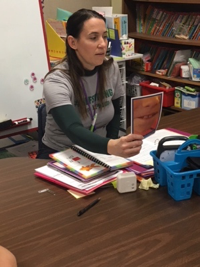 | 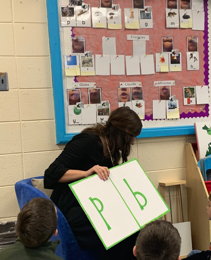 |
We begin with the speech sounds and then add the print. Phonemes can be classified by articulatory features that have to do with placement in the mouth, airflow, and voicing. Begin by talking about how your lips come together when saying the /p/. Notice what happens with your tongue when you say /l/, it is lifted in the top of your mouth behind your teeth. There is also a vibration when saying /l/, and we call that voicing. During a two- to three-week period, introduce all of the 44 speech sounds by the articulatory features.
Don't confuse this with all of the spellings of the sounds. By introducing each phoneme, you are giving students an organizational structure to understand the foundation of our language. Even in kindergarten, you are asking children to blend and segment words with all of the speech sounds. Segment the sounds in book, /b/ /oo/ /k/. You wouldn't teach students to read with /oo/, but they use the sound in their speech all of the time. Why not teach the sound explicitly and discuss how we make that sound, what it looks like, and feels like? Once the sound is obvious, it will be much easier to attach the different graphemes for reading and spelling.
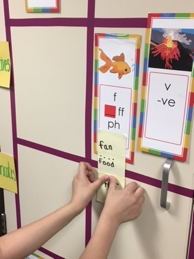 | 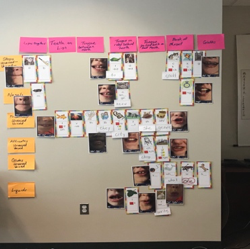 |
Step 2: Attach a keyword to help students remember the sound.
It is unnecessary to print words on different colored paper or outline the shape of a word. Please do not do those things that distract from learning about phonemes (sounds) and graphemes (print).
Once a sound is introduced, teach the most common letter or grapheme that represents the sound. For example, after introducing /p/ teach them that p is the most common spelling for that sound. This is easy initially in kindergarten but becomes more complex in first grade because children have to learn about digraphs and vowel teams that are used to spell many sounds.
 | 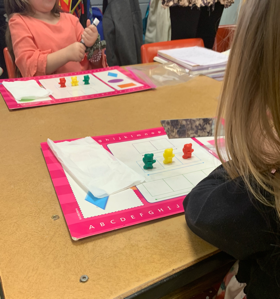 | 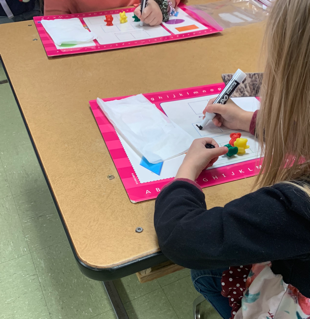 |
Step 3: Daily review and discuss all of the sounds that have been introduced.
What are the six stop sounds? /p/, /b/, /t/, /d/, /k/, /g/
What are our vowel sounds? Ask children to repeat each vowel sound as you point to either a picture of a mouth forming that sound or a keyword that represents the sound. Find the / ā/, and what are the spellings we know for this sound? Commons spellings for / ā/ ai, ay, a_e, and a. These will be the most common spellings used in first grade. Use this information to help students attend to sounds as you are segmenting and blending words during your phonemic awareness practice. As they focus on phonemes during their phonological awareness exercises, this connection between speech and print is enhanced and elevates the understanding of how the two work together.
Step 4: Engage in activities using the sound wall.
Identify the distinguishing features of voiced and voiceless consonant phonemes; orally produce individual consonant phonemes after correct teacher modeling of the voicing distinction: /p//b/; /k//g/; /t/ /d/; /f/ /v/; /sh/ /zh/; /th/ /th/; /ch//j/; /s/ /z/
Explore the way related groups of phonemes are pronounced: stops /p/, /b/, /t/,/d/,/k/, /g/; hissy sounds /f/, /v/, /th/, /th/, /s/, /z/,/sh/; nasals /m/, /n/,
/ng/; glides /h/, /w/, /wh/, /y/; and liquids/l/ and /r/.
Play the speech-sound guessing game. Students imitate the sounds and/or look in a mirror to answer questions such as, which sound is made with the lips—/p/ or /k/? Which sound is made with the mouth wide open—/ŏ/ or /w/? Which sound is made with the tongue between the teeth—/f/ or /th/?
Say /b/, /b/, /b/, and then try saying the same sound with your lips together and popping the air out with your voice on. Now, keep doing the same thing with your lips and your breath but turn your voice off. What sound? /p/ /p/ /p/.
Do a picture sort with /p/ and /b/. In this classroom, the teacher has the students working with the confusing sounds /p/ and /b/ which are only differentiated by voicing.
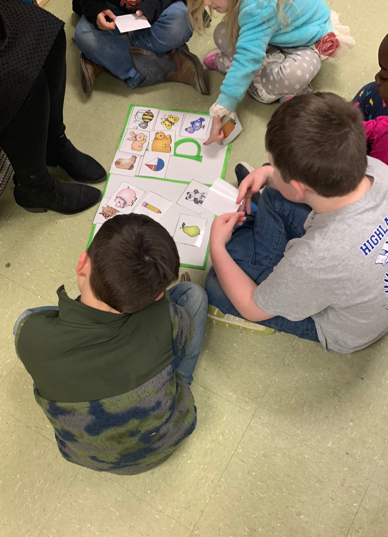 |
Step 5: Use the sound wall for independent learning by problem solving.
When a student asks how to spell "meet," ask them to find the /ē/ and look at the choices for spelling that sound. This is much more efficient than asking them if they can find a word that sounds like or rhymes with "meet." By using a sound wall and connecting directly to the graphemes, students have much quicker access to mapping speech to print.
If a student stumbles on the word like “night” while reading, point out the igh and direct them to the long i card on the sound wall. What do we know about this spelling igh and the sound it represents?
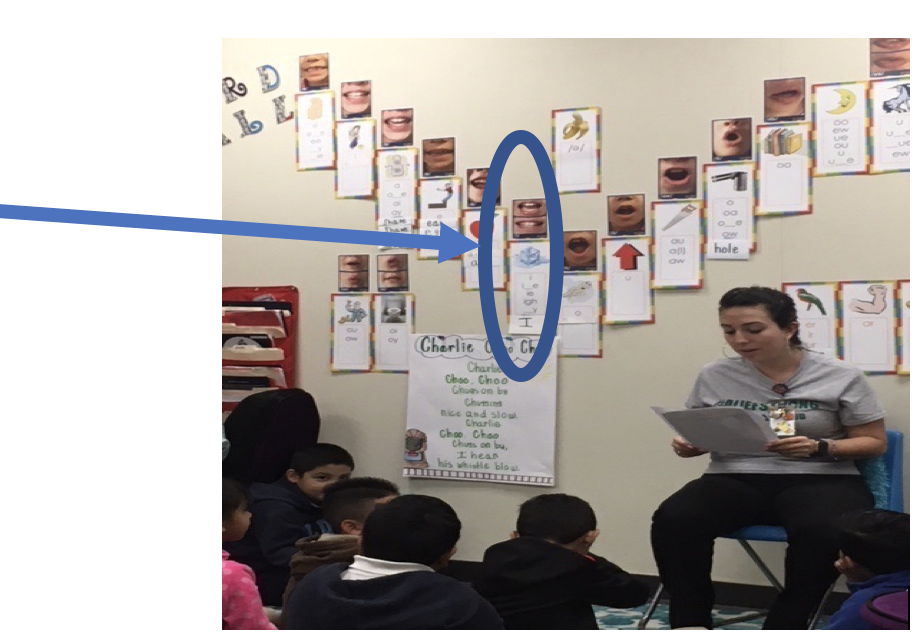 |
Let’s keep this conversation going. Please add your comments and questions below so we can add to the understanding of sound walls at work in a classroom.
Listen to Mary's podcast about the importance of Sound Walls here.


